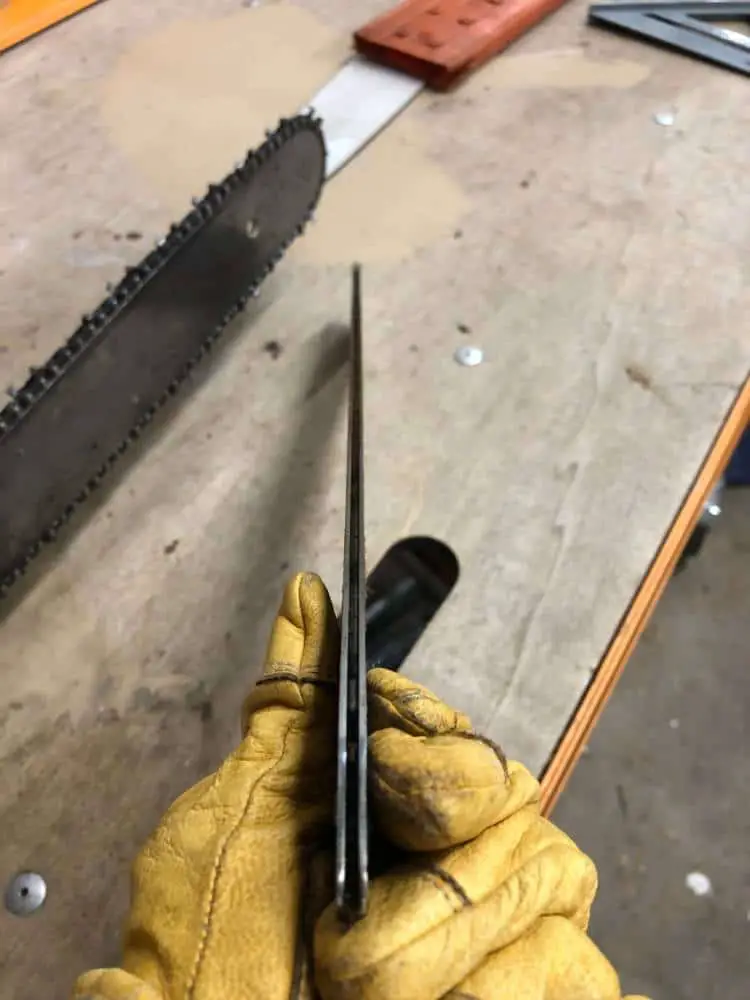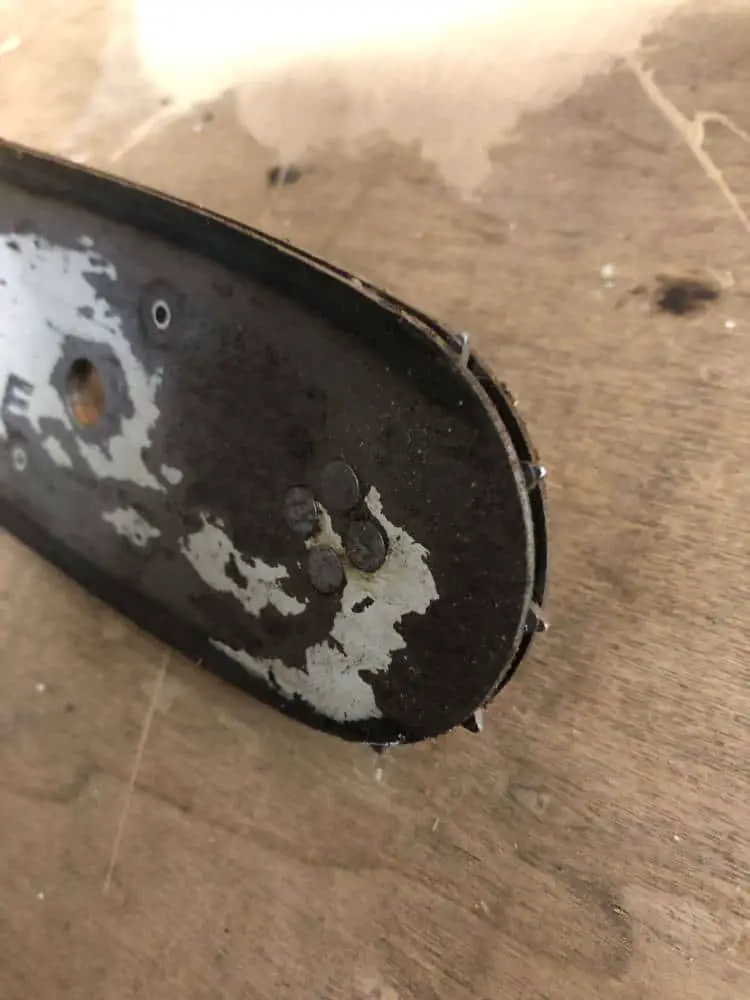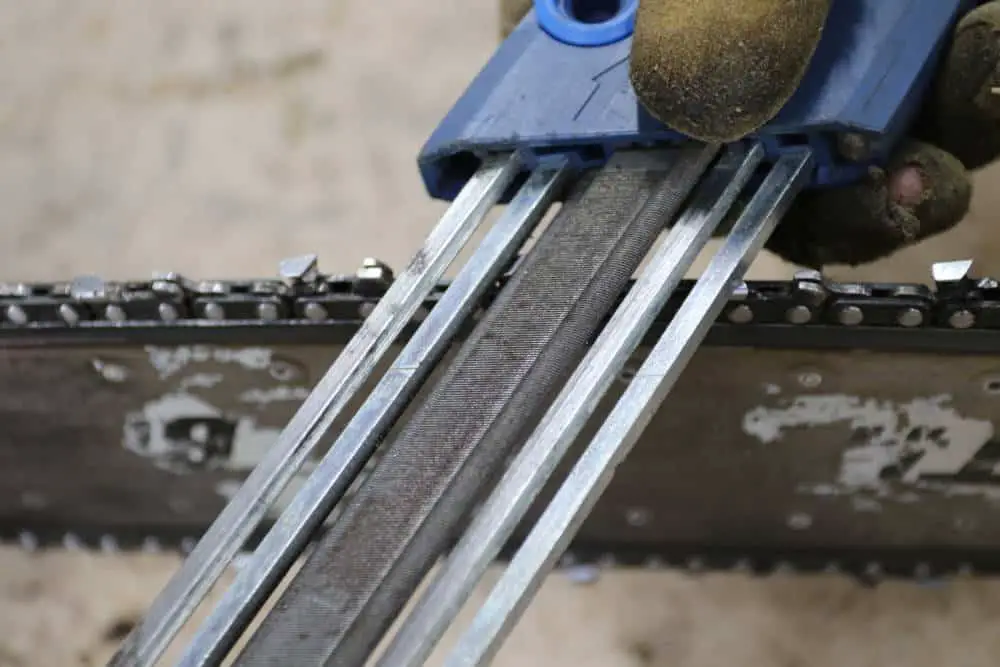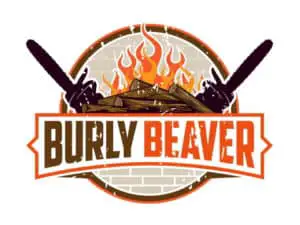Without your chainsaw bar, your chainsaw would be useless. It’s a vital piece of the saw and needs to be up-kept and maintained the same as any other piece. Because it’s such a vital piece of equipment, it’s a good idea to know how long chainsaw bars last.
On average, a chainsaw bar could last ten years unless it becomes damaged or bent. However, how long a chainsaw bar lasts depends on hours of use. If you only use your saw occasionally and maintain it properly, a bar could last as long or longer than the chainsaw.
In this article, we’ll dig into how to tell when your bar needs to be replaced as well as how to upkeep your bar so it lasts as long as possible. Let’s get going.
When to Replace Your Chainsaw Bar
There are three main things to look for when inspecting your bar for damage; bends in the bar, damage to the bar track, and damage to the bar nose.
1. The Bar is Bent
Getting a bend in the bar is the fastest way to ruin a bar and can be hard if not impossible to repair.
Spotting a bent bar is pretty easy.
While cutting with your chainsaw, if the saw consistently pulls to one side no matter how hard you try, this can be an indication that your bar is bent.
Another way to tell is to remove the bar from the chainsaw and lay it on a flat surface. This will make any bends pretty easy to spot.
Unfortunately, only the smallest bends can be fixed. You can use a rubber mallet to gently pound the bend out of the bar.
However, it’s hard to get the bar perfectly back to center, so, unless you’re desperate, I would recommend buying a replacement or having a professional take a look at it.
2. Damage to the Bar Track
Damage to the bar track happens more slowly from wear and tear.
This wear and tear over time can cause your bar track to become too low or too wide. Measure the depth of the bar and the width of your bar occasionally to make sure they’re not too worn out.
For a step by step guide check out our other article about bar wear here.
Another thing to look for is pinches in your bar track. This can be caused by getting your chainsaw stuck in a log with a lot of pressure on just the right spot on the bar.

Lastly, check your bar for any heat damage. This damage occurs when you run your bar for long periods of time without bar and chain oil running through the bar.

This will ‘burn’ your bar and leave a black streak along the edge of the bar track. To help prevent this, make sure to check your bar and chain oil every time you stop to fill up your gas tank
3. Damage to the Bar Nose

The last thing to check for on your bar is for damage to the bar nose.
Cutting towards the end of the bar a lot can cause the bar track to flatten on this part of the bar.
You can also cause damage to the sprocket nose which helps the chain spin around the end of the bar.
If your bar has a replaceable nose, damage to the bar nose is as easy as buying a replacement and installing it. If your bar nose isn’t replaceable, then you’ll have to buy a whole new bar to fix this issue.
How to Maintain Your Chainsaw Bar
Now that we’ve talked about all the things to check and make sure your bar isn’t too damaged, let’s jump into how to maintain your chainsaw bar so it will last as long as possible.
1. Always Run With Bar and Chain Oil

The best way to ensure that your bar lasts a lifetime is to make sure you always run your chainsaw with plenty of bar and chain oil.
Without bar and chain oil, the friction caused by the chain against the bar will be greater which will cause the bar to wear down faster.
Every time you stop cutting or fill up your saw with gas, check the bar and chain oil and fill it up as needed.
Another way to help prevent this friction is to clean out your bar track whenever you remove your bar or chain.
To clean it out, use your gauge tool or any object thin enough to fit in the track and slide it down the bar track to clean out any sawdust gunk inside.
Also, clean out the oil hole to ensure that your bar and chain oil is actually getting into the bar.
For an in-depth guide to cleaning out your oil hole and making sure your oiler is working, check out our other post.
2. File Off Metal Spurs

Over time, the bar will get metal spurs on the edges of bar track from the bar track wearing down.
What do we mean by metal spurs you ask? Metal spurs are bumps that form along the edge of the bar track.
These metal spurs can be filed off using pretty much any kind of hand file. But, the easiest kind of file to use is called a ski tuning file which is designed to glide up and down the bar track and file off any spurs on the outside.
Make sure you check for spurs on both edges of the bar and file them accordingly.
3. Use a Sharp Chain

Some wear to the chainsaw bar can be caused by putting too much pressure on the bar while you’re trying to cut through a log.
You might feel like you need to press down harder to cut through a log when your chain is not sharp. This is the kind of thing that will cause metal burs on your bar.
In order to help prevent this kind of wear to your bar, make sure your chain is sharp.
We’ve got two articles to help with this, there’s one about how to sharpen a chainsaw chain and one to know when to sharpen or replace your chain.
A good rule of thumb is to give your chain a quick run with a file guide or hand file every time you put fuel is your chainsaw.
4. Distribute Wear on Bar Evenly
Now this might seem kind of strange to say but there is such a thing as wearing down bars evenly.
To help distribute the wear evenly, flip your bar over every time you clean your bar track. This will help make sure that the wear on the cutting edge, usually the bottom, of the bar is rotated among both sides.
This will help your bar last longer and prevent the bar sides from becoming uneven.
Wrap-Up
And that’s about all there is to say about a chainsaw bar life expectancy.
Check your bar for the common damage we talked about and maintain your chainsaw bar as well as possible.
If you do those simple things you chainsaw bar could easily outlive your chainsaw engine.
Properly maintaining your equipment will not only keep you safer but also save you money in the long run.
Now go do something awesome!
